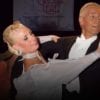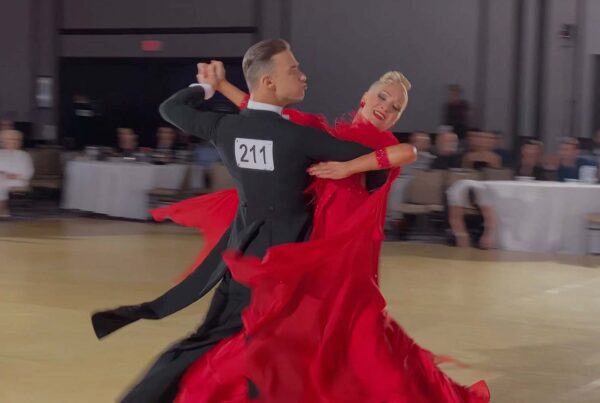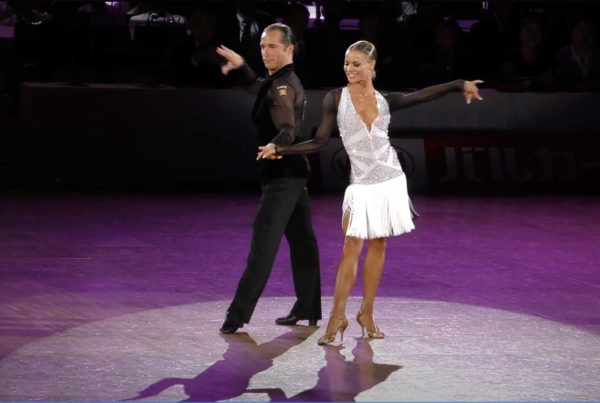The NDCC Canadian National Championship took place again this past weekend. Held at the beautiful Hilton Lac Leamy in Gatineau, Quebec, the event was the biggest one so far. As always, it demonstrated spectacular dancing. Crowned were a few previous title holders as well as new champions.
One of the things that make the national championships so exciting for dance teachers is to see how dancing is developing. I was really pleased to see improvements even from the past year in both musicality and technical quality. There was less fluff. Latin was nicely grounded. I would still like to see continued emphasis on musical expression. For top-level events like the Professional Championships, you expect to see great technique. But to see improved technique from the best couples in the country is remarkable.
In the Pro Ballroom and Pro Latin categories, we had slots open for new champions. Woodrow Wills and Neli Petkova of Vancouver had split after winning the Professional Ballroom title last year. I’m not sure why Valentin Voronov & Anna Pelypenko weren’t at the event, as they are still actively competing and in fact had just danced at New York’s Empire earlier in August. Woodrow is now partnered with Hermione Green. They put in a strong performance, placing third in their Pro Ballroom event. But Vladyslav Komelkov and Alexandra Sevastionova were absolutely spectacular and clearly deserved the win. In Latin, our Vancouver couple Alexey and Vlada Karaulov were head and shoulders above the others. The difference was so dramatic they looked as if they were in another category. And that was against top professionals who were all exceptional dancers!
Daytime events consist primarily of ProAm, where a professional teacher partners with a student. Generally the student is the only one being judged, except in higher level events where the couple is judged. I love watching ProAm, and there was a lot of it. There were so many entries that Friday’s ProAm events ran for 12 hours with barely a break!
The reason I appreciate ProAm is that you see the full spectrum of what dancing represents to different people. There are many skill levels on display, obviously. But beyond that, there is a huge variety of personalities in evidence. People who enjoy performing. Some who are new to competitive dance and not yet appreciating what performance is all about. Some who don’t believe in themselves, and others who think they are better than they really are. You see the entire range of human response to being thrust into the stress of competition.
One of the themes I repeat frequently in this blog is the need to dance with confidence. This was an obvious thread all weekend. It’s tragic to see someone with talent who has no belief in their ability. It doesn’t matter how good you are if you are constantly looking down. Even if you believe you have a long way to go to reach your perception of “good,” you need to behave as if you are already there. It’s part of the performance aspect of dance. Look up. Smile. Interact with your partner. Assume that you are better than the others competing against you, and you might surprise yourself.
A proper perspective on technique
Something that always stands out when watching ProAm and amateur events is that some competitors seem to dance as if technique is a goal unto itself. They strive to be technically proficient, but other aspects of dancing, such as performance skills, arm styling, etc. are empty.
Technique is never an end goal. It’s a foundation towards becoming a better dancer, and needs to be thought of as a part of the process, never a goal in itself. You can be technically superb and still be boring to watch and weaker on the floor than everyone else.
It’s worth thinking about how technique came to be. Teachers around the world use guides like the technique books from ISTD as sources of technical information. These books serve as blueprints for good technique. But they do not make us dancers.
These books were originally created by icons such as Alex Moore and Walter Laird by painstakingly studying what the world’s best dancers were doing. They would watch a world championship couple dance a figure (perhaps one they had invented) over and over again, dozens of times. Alex and Wally would write down every aspect of how those figures were danced. Foot positions. Alignments. Timing. Amount of turn. CBM and CBMP. Sway.
They observed these elements that made the couple look better than others, and recorded them so that we all had a standard we could use to help us understand the dynamics of moving like that. You can match all those things and still not look like a world champion. The technique is only a foundation. Good technique makes it easier for us to move together fluidly and efficiently. It helps us be properly balanced, especially for challenging figures. But it does not by itself make us into great dancers. We bring our own passion, our personality and our individual strengths to every performance. That’s where the dancing really happens.











